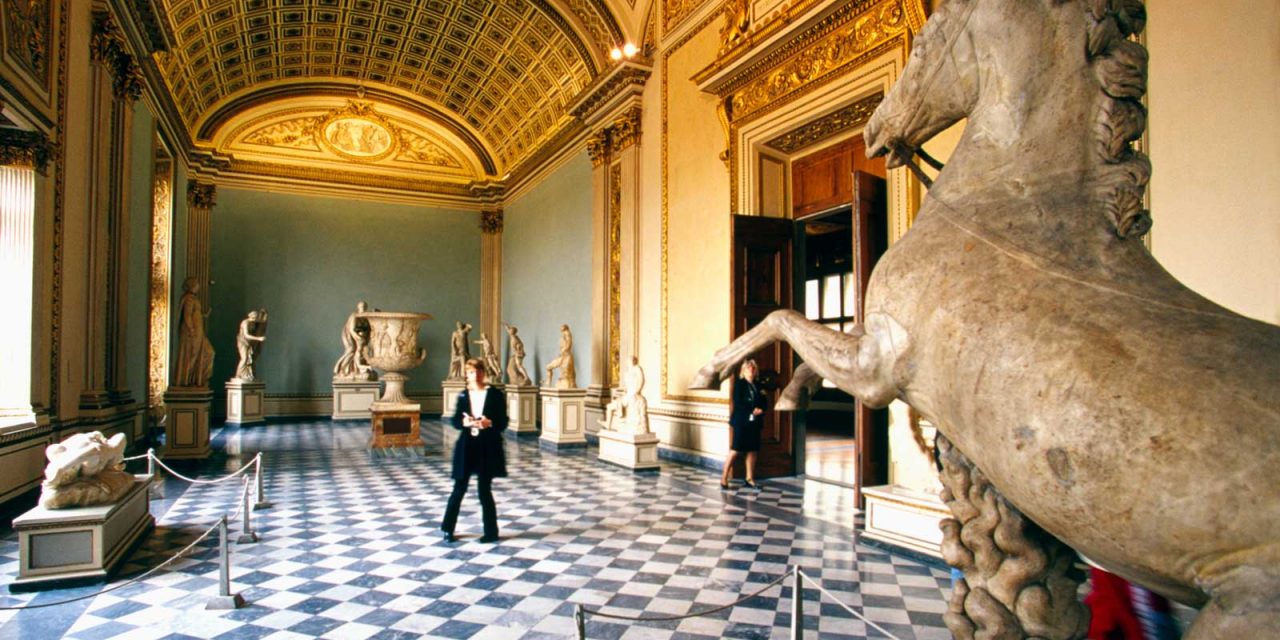Think about the last time you visited a museum. Were you excited, or did you break out in a cold sweat at the mere thought of having to navigate the vast halls? Did you leave feeling enriched or exhausted? If you could relive that time, what would you do differently?
The truth is, if you ask five different experts about the best way to tour an art museum, you will likely get five different answers. If pressed to deliver a basic list, on a pragmatic level, it would be something like this:
- One: Exhibit appropriate behavior at all times. Do not touch the art, climb on the sculptures, talk loudly, or block the view of other visitors.
- Two: Orient yourself with the museum’s layout and be familiar with both permanent and visiting exhibits.
- Three: Use an audio tour if one is available.
- Four: Ask questions of the docents and museum personnel. They are all familiar with the art and well-versed in the stories that surround it.
While none of these recommendations are bad, I would like to steer away from the pragmatic and practical aspects of touring an art museum. Instead, I would like to focus on how and why to look at the art it contains.
As a teacher at a classical school, my day revolves around questions, so let me start by asking a few. In a world filled with war, famine, and poverty, why should we choose to go to a museum to look at art? Wouldn’t our time be better spent tackling these problems head-on, rather than by looking at paintings and sculptures? I would argue that we should look at, and engage with, art because we are hard-wired to love beauty. God endowed humans not only with the ability to see and appreciate beauty but with a deep-seated need to sit at its feet and contemplate it. Every human being on earth, regardless of religious beliefs, socio-economic background, or ethnicity yearns for beauty. C. S. Lewis explained it best when he wrote, “The sweetest thing in all my life has been the longing to reach the mountain, to find the place where all the beauty came from…” I dare say that not only is looking at art not a waste of time, but it is vital to our very souls.
Gazing upon a work of art can elevate our thoughts and focus our minds and hearts on something that transcends the hard things about this world. So, while in itself Pablo Picasso’s The Soup cannot miraculously resolve the problem of world hunger, it can, if we allow it, cause us to meditate on the power of simple acts of compassion. It’s hard to say whether the woman, cloaked in blue, is giving the bowl of steaming soup too or receiving it from, the little girl whose hands are raised. If Picasso was here to ask, he may have told us it doesn’t matter. Because what we are looking at is the act of giving. One person is hungry, and the other presents a small kindness which fills that void. Some people might call me an idealist for thinking that looking at art could play even the most minute role in changing the world. But in light of that idealism, I would like to present you with my own list. A list to help you think not only about how to look at art, but why you should engage it.
One—Unplug from your electronic devices and go find art to look at. You don’t have to travel far, and standing in the presence of something real and tangible always trumps looking at an image of it on a screen.
Two—Pay attention. By this, I don’t mean necessarily to pay strict attention to the docent or the audio tour, but to your senses. What work are you drawn to? What sort of response does it elicit from you? Does it evoke memories about something? Does it make you think about events or ideas? Be aware of these immediate reactions and pay heed to them.
Three—Don’t stop there. To look at art is one thing, but to really see it is another thing entirely. Ask yourself why you were drawn to it in the first place. I am utterly in awe of the art of Michelangelo Caravaggio. I have studied his paintings and read about his life for years. I have admired the depth and movement of the figures he paints, and I have tried to reconcile their beauty with the volatile life he led. But the first time I saw his Madonna di Lareto in Rome two years ago, I had an almost visceral reaction to the absolute beauty of the Madonna, leaning against the open door of a humble house, her halo barely visible. This wasn’t the first Madonna to be painted, nor will it be the last. It wasn’t a typical depiction of Mary and the infant Jesus. She wasn’t enthroned or portrayed as especially regal or holy. But she holds her child with gentleness and grace as she welcomes two travel-weary pilgrims, feet filthy from miles and miles of walking, faces bearing the ravages of age and hard travel. I could talk about the technical and objective beauty of this painting—the composition, Caravaggio’s use of light and color, his clear understanding of proportion and movement—for hours. But what strikes me first and foremost is the beautiful image of the human capacity to love, which is conveyed by portraying an iconic figure in an unexpected way.
Four—Don’t beat yourself up if you don’t “get it”. You won’t emotionally connect with every painting you see. One of the chief aims of art is for the artist to communicate something and that ‘something’ may or may not resonate with you. While I will argue that there is such a thing as objectively beautiful art, I will also be the first to say that you won’t necessarily be moved by it just because an expert in the field tells you that you should be. Of the trifecta of “truth, goodness, and beauty”, beauty is the hardest to define. While there are undoubtedly qualities and characteristics that designate a work of art as objectively beautiful, they are often gently shrouded in mystery. Even experts do not always agree on what is beautiful. Without the knowledge of an expert to guide you, you might never look at a painting by Kandinsky and see anything other than squiggles, lines, and splashes of color. That being said…
Five—Your opinion of the art is not the determining factor of whether or not it is good.
Why? Because a lack of emotional connection with a work, a lack of understanding about the artist’s intent, and a good old-fashioned dislike are not the standards by which art is deemed “good” or “bad.” I challenge you to educate yourself—about the art and the artist. You might still walk away not liking it any more than you did before, but chances are high that you will have learned something.
Six—Don’t shy away from things that are hard to look at. Struggle is good. It is a real, tangible thing that we deal with all areas of our lives at one time or another. It is the place where God typically gets ahold of us and does his best work. If this is true, and we really believe that we are image-bearers of God, then shouldn’t art depict hard things, and shouldn’t we look at them? In the same way, Picasso’s painting can elevate our thoughts to acts of kindness, paintings such as The Third of May, 1808, by Francesco Goya, can elevate our thoughts to acts of sacrifice and lead us to gratitude. This painting depicts the systematic execution of members of the Spanish resistance during the Napoleonic Wars by the French army. The central figure, distinguished by his white shirt which stands out in stark contrast to the darkness of night and the surrounding figures shrouded in shadow, faces his executioners head-on. His eyes are open, his arms spread wide as he awaits his fate. To his right lay the dead who were executed before him; to his left are those awaiting their turn, lined up as far as the eye can see.
This figure, illuminated by a single lantern, represents the horrors of war. The Third of May is not a “pretty” picture. It is difficult to look at, as it should be. But it doesn’t stop with the pile of the dead, the blood-stained ground, the fear-filled eyes of the damned, or the cold, callous nature of the executioners. While the scene can be immediately looked at as a depiction of the fallen nature of humanity, it also draws attention to some of man’s best qualities. The man in the white tunic faces his fate with courage, even as those coming after him look away and weep. He chose to stand for his country in spite of the threat of death, which leads me to think about all the others who have done the same. It leads me to feel gratitude towards them. And it leads me to the realization that death, no matter how tragic or horrific, is not the end.
So. How does all of this connect to touring an art museum? It speaks to the importance of art—the making of it and the looking at it. It speaks to our thirst for beauty in a culture that devalues it and tries to debunk its very existence. My hope is that you will allow yourself to go beyond the simple viewing of art and enter into the realm of wonder and possibility that it presents.
Jocelyn Collins is the Upper School art and capstone teacher at Westminster Academy in Memphis, TN. She holds a BS in Fine Arts from Savannah College of Art & Design.










